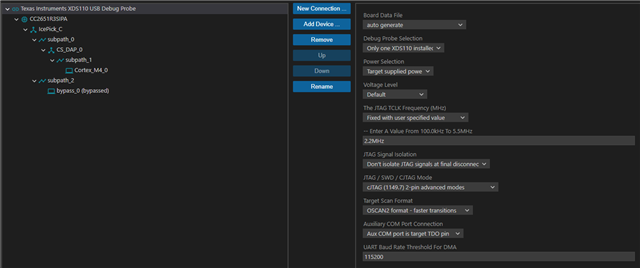Other Parts Discussed in Thread: CC2651R3SIPA
Tool/software:
Hi All,
When debugging CC2651R3SIPA using TMDSEMU110-U,
I understand that the power supply voltage of CC2651R3SIPA must be input to the ‘VTREF’ terminal on the TMDSEMVU110-U side.
Is this correct?
Or is it possible to debug without inputting to VTREF in the IDE settings?
Best Regards,
Ito



